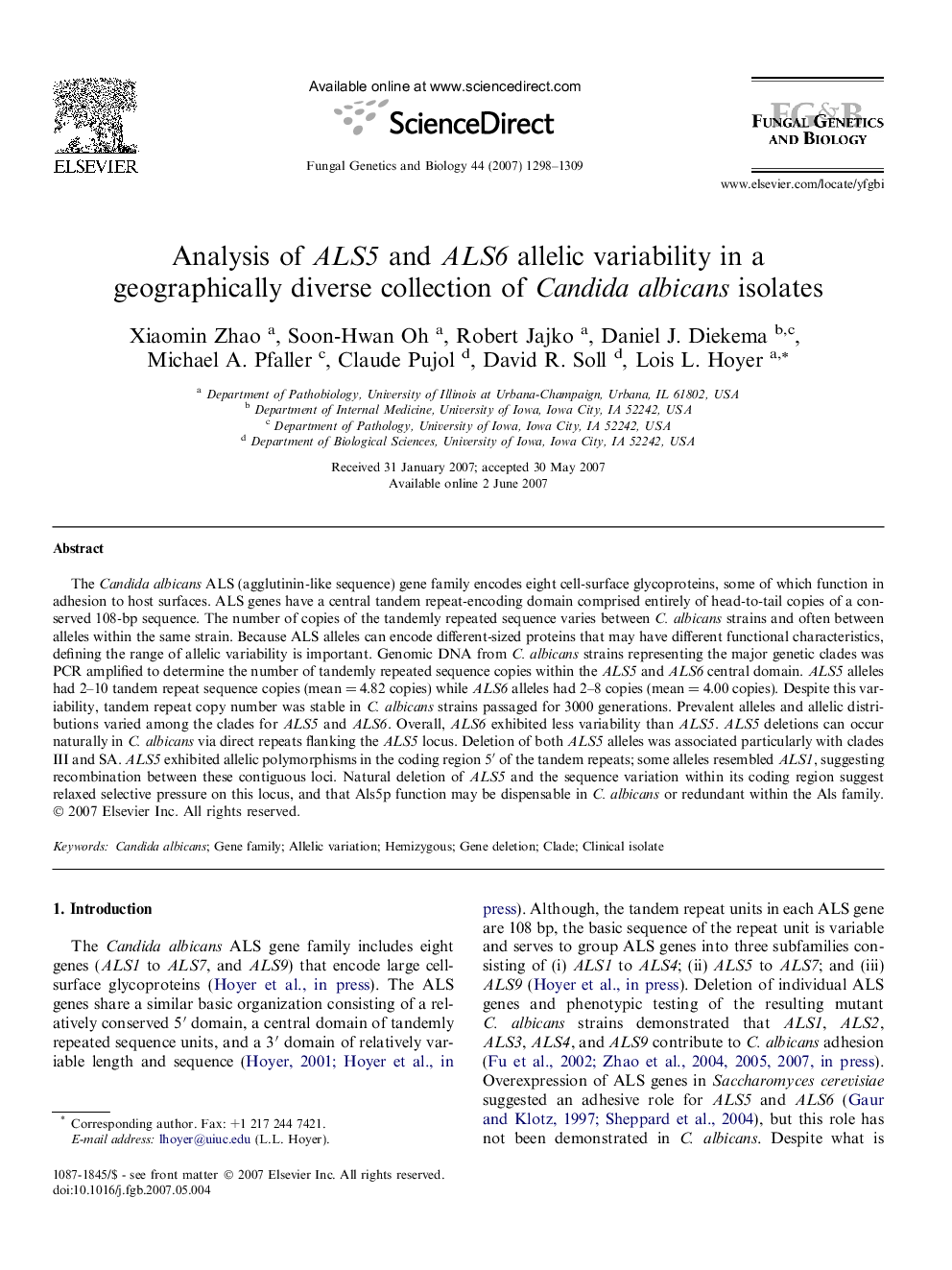| Article ID | Journal | Published Year | Pages | File Type |
|---|---|---|---|---|
| 2181597 | Fungal Genetics and Biology | 2007 | 12 Pages |
The Candida albicans ALS (agglutinin-like sequence) gene family encodes eight cell-surface glycoproteins, some of which function in adhesion to host surfaces. ALS genes have a central tandem repeat-encoding domain comprised entirely of head-to-tail copies of a conserved 108-bp sequence. The number of copies of the tandemly repeated sequence varies between C. albicans strains and often between alleles within the same strain. Because ALS alleles can encode different-sized proteins that may have different functional characteristics, defining the range of allelic variability is important. Genomic DNA from C. albicans strains representing the major genetic clades was PCR amplified to determine the number of tandemly repeated sequence copies within the ALS5 and ALS6 central domain. ALS5 alleles had 2–10 tandem repeat sequence copies (mean = 4.82 copies) while ALS6 alleles had 2–8 copies (mean = 4.00 copies). Despite this variability, tandem repeat copy number was stable in C. albicans strains passaged for 3000 generations. Prevalent alleles and allelic distributions varied among the clades for ALS5 and ALS6. Overall, ALS6 exhibited less variability than ALS5. ALS5 deletions can occur naturally in C. albicans via direct repeats flanking the ALS5 locus. Deletion of both ALS5 alleles was associated particularly with clades III and SA. ALS5 exhibited allelic polymorphisms in the coding region 5′ of the tandem repeats; some alleles resembled ALS1, suggesting recombination between these contiguous loci. Natural deletion of ALS5 and the sequence variation within its coding region suggest relaxed selective pressure on this locus, and that Als5p function may be dispensable in C. albicans or redundant within the Als family.
